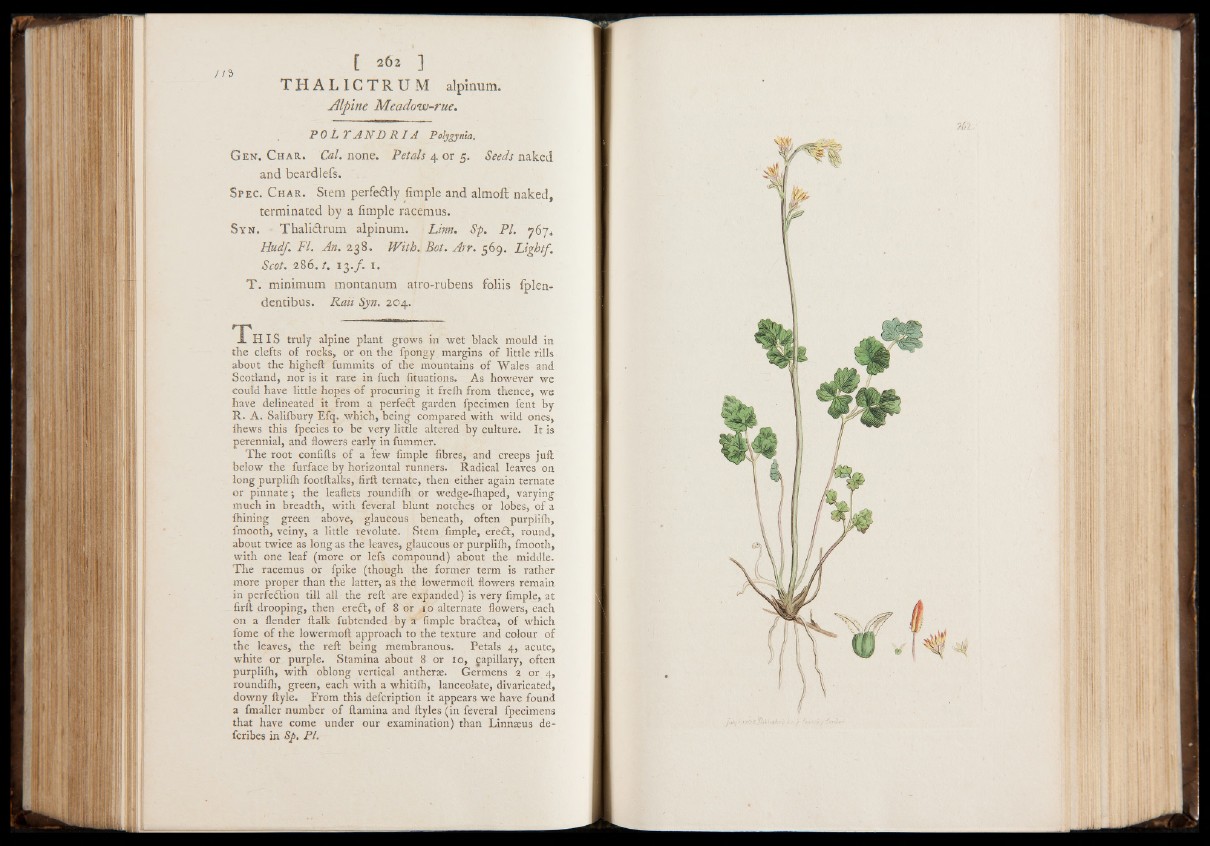
[ 262 ]
THA L I G T RUM alpinum.
Alpine Meadow-rue.
//&
P O L Y A N D R IA Polygynia,
Gen. Char. Cal. none. Petals 4 or 5. Seeds naked
and beardlefs.
Spec. Char. Stem perfe&ly fimple and almoft naked,
terminated by a fimple racemus.
Syn. Thalictrum alpinum. Linn. Sp. PI.
Hudf. FI. An. 238. With. Bot. Arr. 569. Light/.
Scot. 28o.t. 13.ƒ. 1.
T . minimum montanum atro-rubens foliis fplen-
dentibus. Ran Syn. 204.
nr I H I S truly alpine plant grows in wet black mould in
the clefts of rocks, or on the fpongy margins of little rills
about the higheft fummits of the mountains of Wales and
Scotland, nor is it rare in fuch fituations. As however we
could have little hopes of procuring it frelh from thence, we
have delineated it from a perfect garden fpecimen fent by
R. A. Salifbury Efq. which, being compared with wild ones,
{hews this fpecies to be very little altered by culture. It is
perennial, and flowers early in fummer.
The root confifls of a few fimple fibres, and creeps juft
below the furface by horizontal runners. Radical leaves on
long purplilh footftalks, firft ternate, then either again ternate
or pinnate; the leaflets roundifh or wedge-fhaped, varying
much in breadth, with feveral blunt notches or lobes, of a
{hining green above, glaucous beneath, often purplifh,
fmooth, veiny, a little revolute. Stem fimple, ereCt, round,
about twice as long as the leaves, glaucous or purplifh, fmooth,
with one leaf (more or lefs compound) about the middle.
The racemus or fpike (though the former term is rather
more proper than the latter, as the lowermoft flowers remain
in perfection till all the reft are expanded) is very fimple, at
firft drooping, then ereCt, of 8 or 10 alternate flowers, each
on a {lender {talk fubtended by a fimple braCtea, of which
fome of the lowermoft approach to the texture and colour of
the leaves, the reft being membranous. Petals 4, acute,
white or purple. Stamina about 8 or 10, capillary, often
purplifh, with oblong vertical antherse. Germens 2 or 4,
roundifh, green, each with a whitilh, lanceolate, divaricated,
downy ftyle. From this defcription it appears we have found
a fmaller number of {lamina and ftyles (in feveral fpecimens
that have come under our examination) than Linnaeus de-
fcribes in Sp. PI.